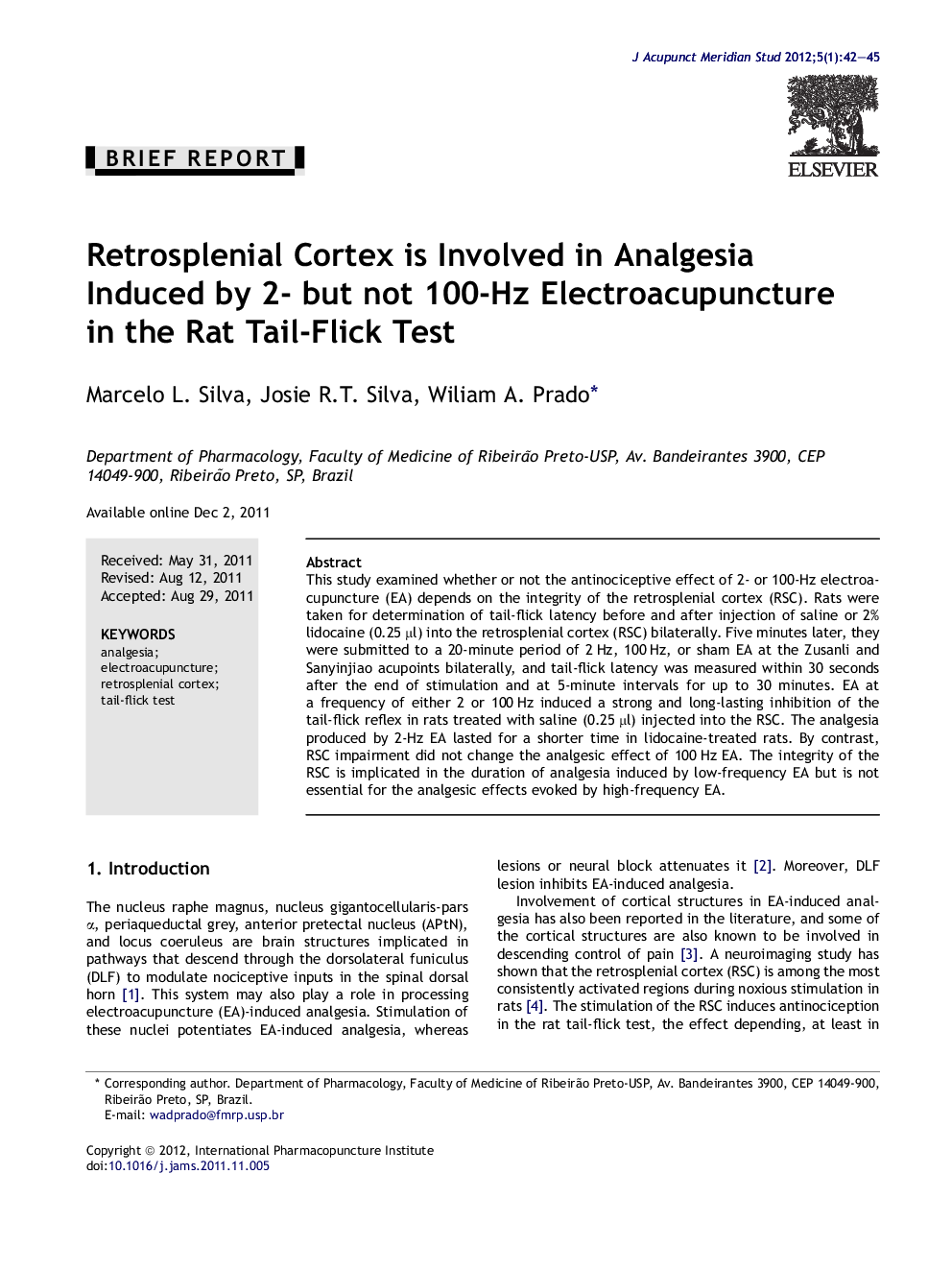| Article ID | Journal | Published Year | Pages | File Type |
|---|---|---|---|---|
| 3098796 | Journal of Acupuncture and Meridian Studies | 2012 | 4 Pages |
This study examined whether or not the antinociceptive effect of 2- or 100-Hz electroacupuncture (EA) depends on the integrity of the retrosplenial cortex (RSC). Rats were taken for determination of tail-flick latency before and after injection of saline or 2% lidocaine (0.25 μl) into the retrosplenial cortex (RSC) bilaterally. Five minutes later, they were submitted to a 20-minute period of 2 Hz, 100 Hz, or sham EA at the Zusanli and Sanyinjiao acupoints bilaterally, and tail-flick latency was measured within 30 seconds after the end of stimulation and at 5-minute intervals for up to 30 minutes. EA at a frequency of either 2 or 100 Hz induced a strong and long-lasting inhibition of the tail-flick reflex in rats treated with saline (0.25 μl) injected into the RSC. The analgesia produced by 2-Hz EA lasted for a shorter time in lidocaine-treated rats. By contrast, RSC impairment did not change the analgesic effect of 100 Hz EA. The integrity of the RSC is implicated in the duration of analgesia induced by low-frequency EA but is not essential for the analgesic effects evoked by high-frequency EA.
